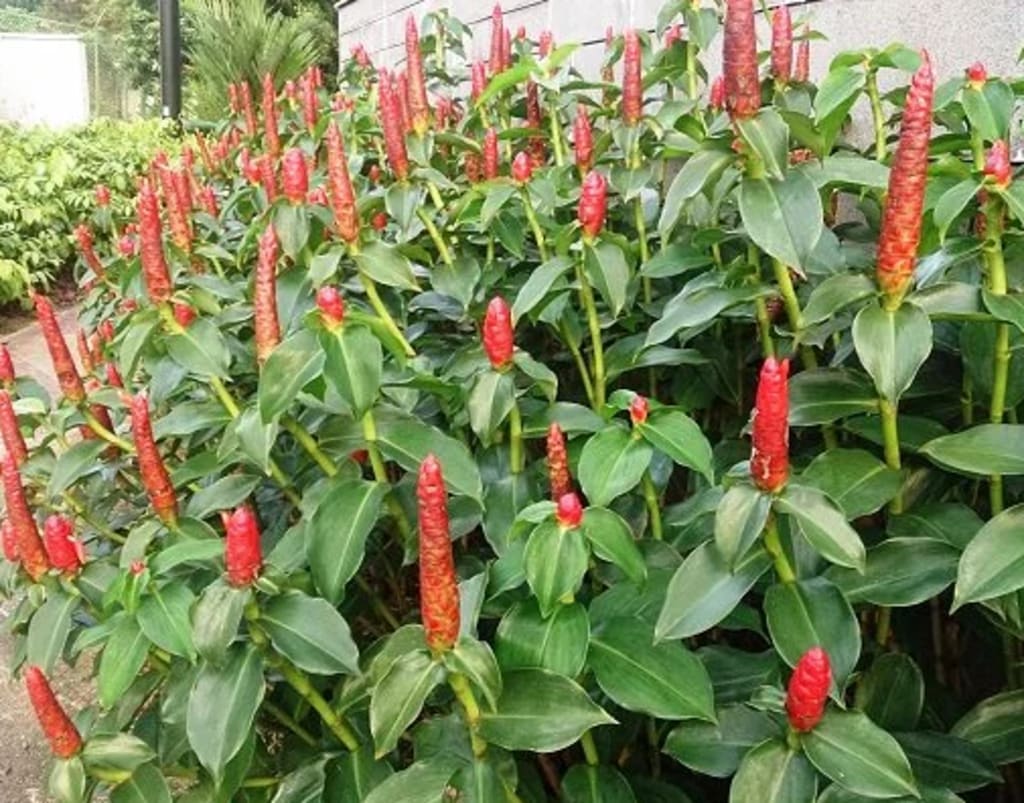
1. Ilima
Ilima, scientifically known as Sida fallax, is a petite yet remarkable flowering plant native to the Hawaiian Islands and certain parts of the Pacific region. This understated but captivating plant is celebrated for its dainty yellow blossoms, cultural significance, and its role in Hawaiian traditions.
Ilima is characterized by its small, five-petaled, bright yellow flowers that grow on slender stems. These charming blossoms are typically no larger than a centimeter in diameter but are abundant and create a beautiful display when in bloom. The name “Ilima” is derived from the Hawaiian language and is often associated with ideas of beauty, delicacy, and grace.
In Hawaiian culture, Ilima holds special significance and is considered the island’s emblematic flower. It has been cherished for centuries, symbolizing the spirit of Aloha and the beauty of Hawaii. Ilima leis (garlands) are traditionally woven and gifted as tokens of love, respect, and hospitality. These intricate leis are made by carefully stringing Ilima blossoms together, creating a fragrant and delicate symbol of Hawaiian tradition and warmth.
Cultivating Ilima requires an understanding of its specific needs. These plants thrive in well-draining soils and prefer full sun or partial shade. They are adapted to Hawaii’s warm and tropical climate and can be grown both in gardens and in containers. Ilima’s low-maintenance nature makes it a popular choice among gardeners and landscapers.
Apart from its ornamental and cultural value, Ilima has also been utilized for its medicinal properties. Traditional Hawaiian healers have used various parts of the plant, including its leaves and roots, to create herbal remedies. These remedies were believed to treat ailments such as coughs, colds, and skin irritations.
In recent years, there has been an increased effort to protect and preserve native Hawaiian plants like Ilima, as many of them face threats from habitat destruction and invasive species. Conservation initiatives focus on safeguarding these culturally significant plants and their ecosystems.
In conclusion, Ilima is a modest yet symbolically rich flowering plant native to Hawaii, cherished for its petite yellow blossoms and cultural importance. It is a powerful embodiment of Aloha spirit, gracing the islands with its delicate beauty and fragrant leis. As efforts to protect native Hawaiian plants continue, Ilima remains an enduring symbol of Hawaii’s natural and cultural heritage.
2. Red Ginger
Red Ginger, scientifically known as Alpinia purpurata, is a striking and vibrant flowering plant native to the tropical regions of Southeast Asia and the Pacific Islands. Celebrated for its captivating crimson inflorescence, Red Ginger stands as a symbol of lush tropical beauty and has earned its place in gardens, floral arrangements, and cultural traditions around the world.
The most distinguishing feature of Red Ginger is its dramatic flower spikes, which consist of bright red bracts that resemble cones or torches. These bold and conspicuous inflorescences emerge from the plant’s tall, leafy stems, creating a vivid contrast between their striking red hue and the surrounding green foliage. The true flowers are small and inconspicuous, nestled within the protective embrace of the bracts.
Cultivating Red Ginger requires providing it with the warm and humid conditions it thrives in. This tropical plant flourishes in well-draining soil and ample sunlight, making it a popular choice for gardens in regions with tropical and subtropical climates. Adequate watering is essential to ensure healthy growth and abundant flowering.
Red Ginger’s stunning appearance has made it a beloved addition to gardens and tropical landscapes, where it adds a bold splash of color and an exotic ambiance. In addition to its ornamental value, Red Ginger is also utilized in floral arrangements and decorative displays. Its long-lasting bracts make it a favorite for cut flower arrangements and leis in various cultures.
The cultural significance of Red Ginger extends to its use in traditional medicine and rituals. In some Southeast Asian cultures, parts of the plant, such as the rhizomes, are employed in herbal remedies to treat various ailments. Additionally, Red Ginger has symbolic importance in traditional ceremonies and rituals, where it is often associated with purification and protection.
Conservation efforts are crucial to safeguard Red Ginger and other native plant species. Deforestation and habitat destruction pose significant threats to their natural habitats, emphasizing the importance of conservation initiatives aimed at preserving biodiversity and protecting these botanical treasures.
In conclusion, Red Ginger is a stunning tropical plant celebrated for its bold and vibrant red inflorescences. Its striking appearance, cultural significance, and versatility in both gardens and traditional practices make it a cherished botanical gem. As efforts continue to protect and preserve its native habitats, Red Ginger remains a symbol of tropical beauty and cultural richness.
3. Anthurium
Anthurium, scientifically known as Anthurium andraeanum, is an extraordinary and visually captivating tropical plant renowned for its distinctive, heart-shaped, and brilliantly colored spathe-and-spike inflorescence. Hailing from the rainforests of Central and South America, Anthurium is a symbol of elegance and exotic beauty, making it a favorite in homes, gardens, and floral arrangements worldwide.
The most prominent feature of Anthurium is its unique inflorescence, which consists of a glossy, heart-shaped bract known as the spathe that envelops a slender, upright structure called the spadix. The spathe can be found in an array of colors, including vibrant red, pink, white, orange, and green, while the spadix typically takes on shades of creamy white or yellow. Together, they create a visually striking and long-lasting bloom.
Anthurium’s striking appearance has earned it several popular nicknames, including “Flamingo Flower” and “Laceleaf.” These names highlight the plant’s elegance and the enchanting shape of its bracts.
Caring for Anthurium involves providing it with the warm and humid conditions it thrives in. It prefers well-draining soil and moderate, indirect sunlight. Keeping the soil consistently moist without overwatering is essential for its health, and occasional misting can help maintain the humidity levels it enjoys. Anthuriums are relatively low-maintenance, which makes them suitable for both indoor and outdoor cultivation.
Aside from its ornamental value, Anthurium has garnered attention for its air-purifying qualities. It is known to remove certain indoor air pollutants, including formaldehyde and ammonia, making it a beneficial addition to homes and offices.
Anthurium’s significance extends to various cultures and traditions. In some regions, it is considered a symbol of hospitality and is often gifted to hosts as a token of appreciation. Additionally, Anthurium holds importance in certain indigenous cultures for its association with love and friendship.
Conservation efforts are essential to protect Anthurium and its natural habitat, as the plant’s rainforest homes face the threats of deforestation and habitat destruction. Preserving these biodiverse ecosystems is crucial for the long-term survival of Anthurium and other tropical species.
In conclusion, Anthurium is a captivating tropical plant celebrated for its heart-shaped and brilliantly colored inflorescence. Its unique appearance, air-purifying qualities, and cultural significance have made it a beloved addition to homes, gardens, and floral arrangements worldwide. As we continue to appreciate its beauty, it is imperative to support conservation initiatives to ensure Anthurium’s enduring presence in our lives and its native habitats.
About the Creator
Enjoyed the story? Support the Creator.
Subscribe for free to receive all their stories in your feed. You could also pledge your support or give them a one-off tip, letting them know you appreciate their work.





Comments
There are no comments for this story
Be the first to respond and start the conversation.